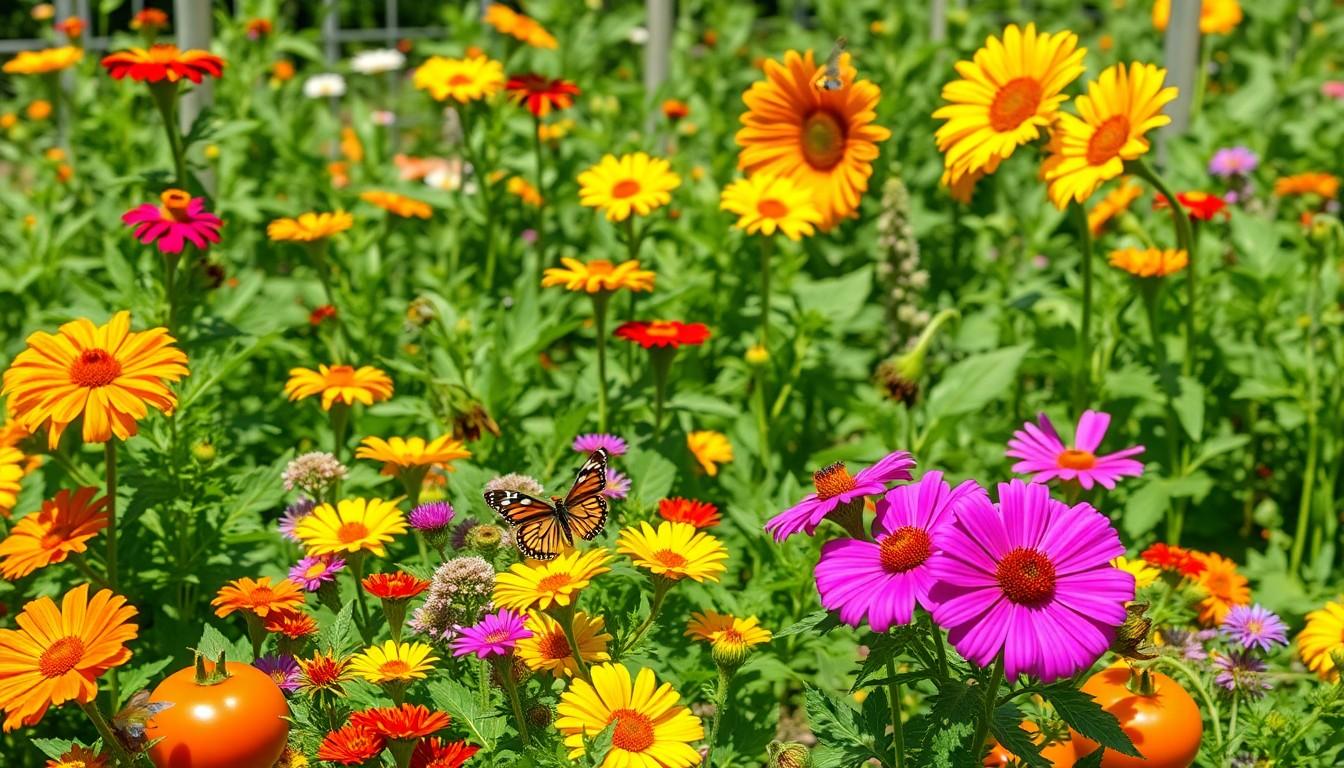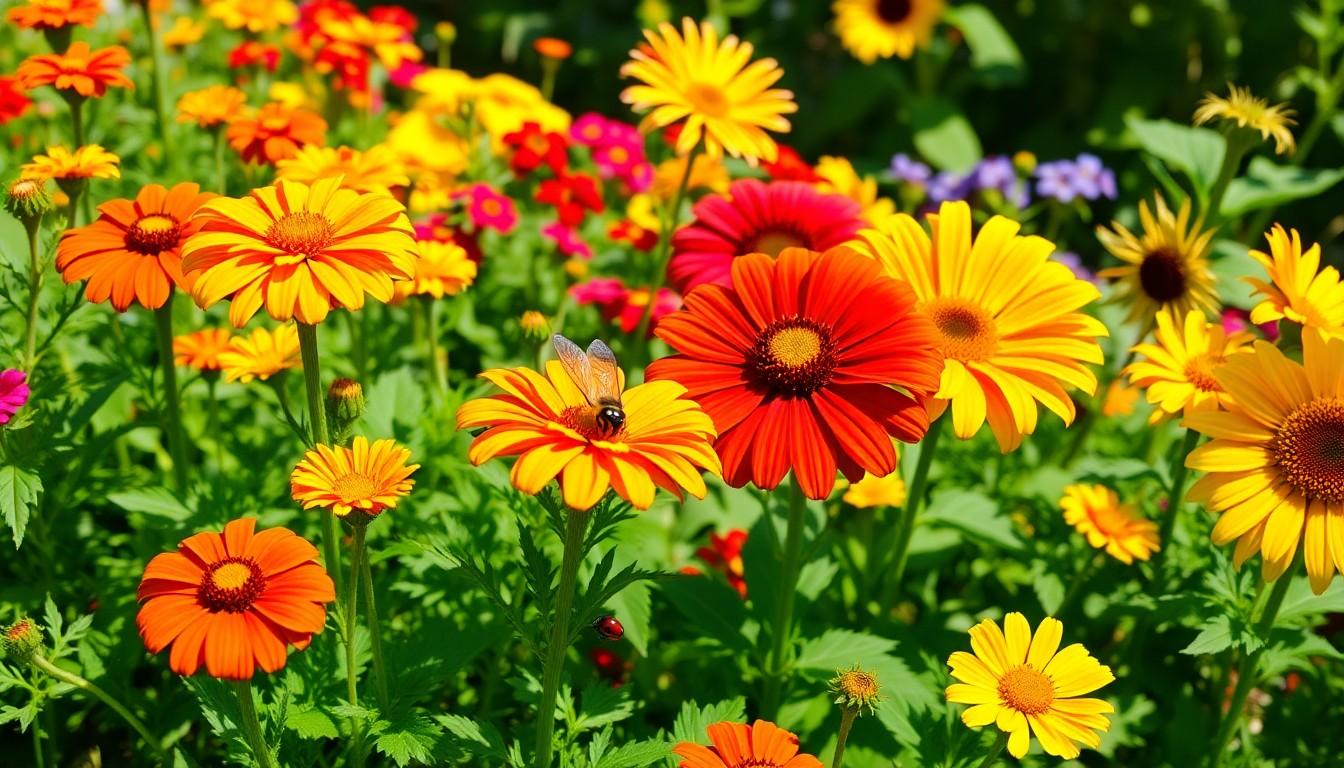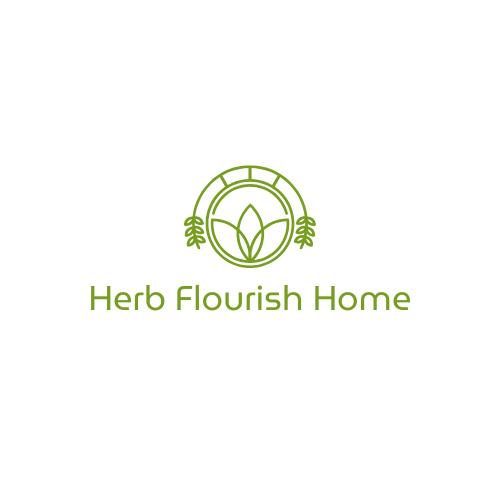
Good Flowers for Vegetable Garden: Boost Yields and Attract Beneficial Insects
Imagine strolling through a vegetable garden bursting with vibrant greens and the sweet scent of blooming flowers. It’s not just a feast for the eyes; it’s a strategic move for any gardener. Adding flowers to a vegetable garden isn’t just about aesthetics; it’s about creating a thriving ecosystem. Certain flowers can attract beneficial insects, deter pests, and even enhance the flavors of nearby veggies.
Benefits Of Flowers In Vegetable Gardens
Incorporating flowers into vegetable gardens offers numerous advantages. Flowers not only boost aesthetics but also contribute to a healthier garden ecosystem.
Pollination Support
Flowers play a critical role in attracting pollinators. Bees, butterflies, and other beneficial insects flock to blooming plants for nectar. Increased presence of these pollinators leads to better fruit and seed production. Many flowers, such as marigolds and sunflowers, attract these insects effectively, improving overall crop yields. Enhanced pollination directly influences the health of vegetables, making it essential to select flowering plants that thrive alongside them.
Pest Control
Flowers serve as natural pest deterrents. Certain species, like nasturtiums and calendulas, repel harmful insects that threaten vegetable crops. By planting these flowers, gardeners can reduce the need for chemical pesticides. Beneficial insects, like ladybugs and lacewings, are often drawn to flower varieties, creating a balanced ecosystem. This reduces pest populations while encouraging natural predators, enhancing the resilience of the vegetable garden.
Types Of Good Flowers For Vegetable Gardens

Incorporating specific flowers enhances vegetable gardens. Different flower types provide unique benefits.
Companion Plants
Companion flowers support vegetable growth. Marigolds deter nematodes while attracting pollinators. Nasturtiums repel aphids and attract beneficial insects. Borage enhances cucumber flavors and attracts bees. Planting these flowers near vegetables fosters a symbiotic relationship that improves overall garden health.
Attracting Beneficial Insects
Certain flowers attract beneficial insects, which play a critical role in pest management. Coneflowers draw pollinators while providing nectar, benefiting nearby vegetables. Sunflowers attract ladybugs, which feed on aphids. Cosmos entice hoverflies, aiding in natural pest control. Selecting flowers that bring these insects encourages a balanced ecosystem and increases crop yields without chemical interventions.
Best Flowers To Consider
Choosing the right flowers enhances vegetable garden productivity. Several flowers attract beneficial insects and deter pests, promoting a harmonious ecosystem.
Marigolds
Marigolds excel in repelling pests, especially nematodes. Their bright yellow and orange blooms attract pollinators like bees, enhancing vegetable crop yields. Planting marigolds near tomatoes or peppers increases overall health while reducing pest damage. They thrive in full sun and well-drained soil, making them adaptable. Besides pest control, marigolds add vibrant color to the garden, creating an appealing aesthetic.
Nasturtiums
Nasturtiums serve multiple roles in a vegetable garden. They deter aphids and other pests while offering edible flowers and leaves with a peppery flavor. These flowers bloom in various colors, attracting beneficial insects that help with pollination and pest management. Planting nasturtiums alongside cucumbers or squash improves growth while protecting against pests. Their resilience allows them to thrive in poor soil conditions, thus making them a versatile companion plant.
Sunflowers
Sunflowers attract a range of pollinators, including bees and butterflies, which are crucial for vegetable growth. Their tall stature creates a natural support structure for climbing plants. As sunflowers mature, they provide seeds that nourish birds and beneficial insects, contributing to ecological balance. Planting sunflowers near corn or beans fosters companionship while attracting predatory insects that control pests. With their ability to thrive in various soil types, sunflowers offer both beauty and functionality to any garden.
Tips For Incorporating Flowers
Incorporating flowers into a vegetable garden requires thoughtful strategies for optimal results. Using the right planting and maintenance techniques enhances both aesthetics and productivity.
Planting Strategies
Consider spacing flowers among vegetables. This integration allows flowers to act as companions, supporting growth and deterring pests. Plant marigolds near tomatoes and peppers for effective pest control. Nasturtiums can fill gaps while providing edible blooms. Grouping sunflowers alongside climbing vegetables creates a beneficial habitat for pollinators. Where possible, select flowers that bloom at different times to ensure a continuous supply of nectar for beneficial insects throughout the growing season.
Care And Maintenance
Routine maintenance is essential for both flowers and vegetables. Watering requirements may differ; thus, monitoring each type’s needs ensures healthy growth. Fertilizing with organic options benefits flowers while also enhancing the soil for vegetables. Regular deadheading of flowers encourages further blooming and prevents overcrowding. Observing for pests or diseases allows quick intervention before they affect nearby vegetables. Overall, consistent care leads to a vibrant garden, enriching the ecosystem and improving vegetable yields.
Conclusion
Incorporating flowers into a vegetable garden is a smart choice for any gardener. Not only do they enhance the garden’s beauty but they also play a vital role in promoting a healthy ecosystem. By attracting pollinators and deterring pests, flowers help create a balanced environment that supports vegetable growth.
Choosing the right flowers can lead to improved crop yields and reduced reliance on chemical pesticides. With careful planning and maintenance, gardeners can enjoy the benefits of both vibrant blooms and bountiful harvests. Embracing this strategy leads to a thriving garden that’s both productive and visually appealing.



